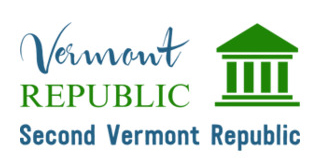With the rapid expansion of legal sports betting in the United States, you may have become curious about the subject.
In this short article, we will cover the basics of the five principle bet types:
- Money Line
- Against the Spread
- The Total
- Propositions (props)
- Parlays
Betting the Money Line

The money line or straight-up betting, often referred to as just SU, is the most basic form of sports betting. When you place a money line wager, you are betting on which team will win the game.
If you refer to the odds for the NFC and AFC Championship game, provided by SportsbookReview below, you can see that Heritage and Bookmaker list the Green Bay Packers with odds of -170, and they have the Tampa Bay Buccaneers around +150. The plus and minus signs are critical here because they denote who is the favorite and who is the underdog through risk and reward.
The minus sign for the Packers signifies that you have to risk the specified numerical amount to win $100. The plus sign for the Buccaneers indicates the amount you would win by risking $100 dollars. So, the Packers are the favorites because you have to risk 170 dollars to win 100. Conversely, if you placed 100 dollars on the Buccaneers and they won, you would win 150 dollars. It’s important to pay attention to this distinction because you will see across all bet types when using Amerian Odds.
A quick side note – You can wager any number between the minimum and maximum bet amount, and the ‘price’ is simply a risk/reward ratio that is universally applied. For example, a winning 20 dollar bet on the Packers at -170 would return $31.76 total for a profit of $11.76.
Betting Against the Spread (ATS)

Spread betting or ATS is the most common sports betting market.
Handicappers evaluate the matchup using power ratings and a plethora of other methods to put a handicap on one team or the other. This is because most of the time, one team is better than the other, and there isn’t much value in making a money line wager. If we continue with the Tampa Bay and Green Bay example, you may not want to risk 170 dollars to win 100. After all, Tom Brady and the Pats may pull off the upset. That said, you don’t have enough faith in the underdog to take them either.
Enter the point spread. The sportsbooks set a line by how many points one team should beat another. In the case of Green Bay, they opened as 3.5-point favorites, but now they are just 3-point favorites at some shops.
Below you will see similar numbers to the money line example above, but with another preceding set of positive and negative numbers. At Heritage and Bookmaker, you see Tampa Bay +3 (+102) Green bau -3 (-118) & -3 (-122). The first number is the number of points a team needs to win by more than or not lose by more than. For the Packers, the -3 indicates that they must win by more than three points. The plus sign for the Buccs means that they just need to keep the game within 3-points for you to get a push (no win but money returned) or less for you to win.
You may have noticed that there some of the points spreads are at 3.5. As there are no half points in major sports, it forces a win or a loss. At +3.5, Tampa Bay just needs to lose by a field goal or less, or even win the game, and you win. But if you take Green bay -3.5, they must win by 4 points. The price or risk, just like the money line example, is the next set of numbers. You’ll see that taking the Buccs +3.5 at Bovada, you would need to risk 120 dollars to win 100. But if you take the Buccs +3 at Heritage, you only risk 100 to win 102 dollars (positive money).
Betting point spreads can make a game that might not be very competitive into something fun, as one team is handicapped. It also adds value, as typically, you see both teams listed with a similar price like -2.5 (-110) +2.5 (-110). -110 or 10 cents is the standard bookie rake.
Betting the Total

The total or Over/Under is another way to find betting value on games. Handicappers assess the matchup to determine the expected amount of combined points scored between both sides. For example, you may see an NFL total of 53.5 points, like the Buffalo Bills vs. Kansas City Chiefs line at Heritage.
Just like the money line and spread, the second set of numbers is the price. But the first set of numbers is by how many points the experts in Vegas and online sportsbooks think the two teams will combine for. You would wager on whether you believe the two teams will score more than the given total (over) or less than the total (under). On a standard odds board, the top line will always be ‘over,’ and the bottom line is ‘under’. You can see above that at Heritage, over or under 53.5 are both set at -108, meaning risk $108 to win $100. But Bet Online has the line at 53 and adjusted the price to favor the over. You have to risk $115 to win $100 on the over.
Parlay Betting

Parlay betting means you combine two or more of any type of bet to get a higher payout. Multiple play parlays are generally looked at like lottery tickets. For example, an 8 game parlay would win you a lot of money. But the calculations are based on the individual lines for each play you are making, which is why it’s best to use a parlay calculator like the one that sportsbookreview.com has, that way, you can double-check the implied probability and your payout.
Parlays are extremely risky, so I usually only use them for entertainment or to parlay a couple of heavy favorites together to make the risk versus reward more even. For example, a two-two team parlay with both plays at odds of -108 would adjust your odds to +270.
Proposition Betting

Propositions or props are fun bets all based on the money line, spreads, and totals, but markets like OVER/UNDER in how many wins a team will get in a season or how many passing yards will a QB get in a game? Props parlays are common in the NBA, such as, I think Lebron will score more than 20 points, plus over 6 rebounds and 7.5 assists.
The Super Bowl is known for having hundreds of props. Everything from the National Anthem duration to the outcome of the coin toss and wardrobe mishaps during the halftime show.
 Vermont Republic Second Vermont Republic
Vermont Republic Second Vermont Republic




